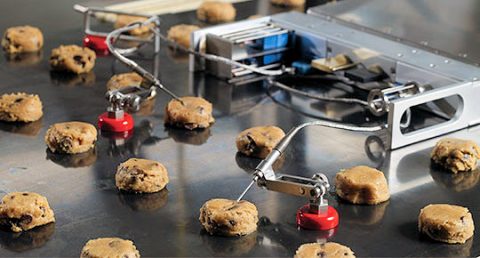Creating safe and delicious bakery products requires precision, patience, and strict adherence to food safety standards. In today’s competitive market, industrial bakeries must take every precaution to ensure that they are producing goods of the highest quality while also taking into consideration their duty of responsibility when it comes to safely preparing those goods. Implementing a “Kill-Step Validation Model” for industrial bakeries is one method that can significantly reduce the risk of foodborne illness outbreaks by providing clear evidence that processes at all steps in the production process have been validated.
Reading Thermal’s precision temperature monitoring systems provide bakeries with the accuracy and reliability to ensure that all Kill-Step Validation processes are met. Our SCORPION® 2 Profiling System provides a reliable means of monitoring and analyzing your oven conditions, providing the key data needed to determine and confirm that the necessary temperatures have been reached at all critical points in the baking process. Real-time feedback reassures your bakers that the product has been properly baked and any potential safety risks have been minimized.
Food Safety Comes First
Bakeries need documented proof that every product that leaves their shelves adheres to the FDA’s Food Safety Modernization Act (FSMA) standards. Underbaked pastries, cookies, crackers, cakes, and other baked goods carry the real risk of bacteria such as Salmonella, Listeria, and E.coli, which can cause serious illness or death if consumed.
The Kill-Step validation model proves that processes have been implemented to eliminate or reduce the risk of foodborne illness. The model requires data collection and analysis of the heat treatments at critical points throughout the baking cycle, such as pre-cooking and post-baking cooling. By gathering this data, industrial bakeries can ensure that the Kill-Step process has been properly implemented with no safety risks posed to their customers.
There are several advantages to be gained by implementing and endorsing this model, including:
- Improved food safety for customers
- Meeting regulatory compliance safety standards
- Standardizing baking procedures for consistent, high-quality products
- Reducing food waste and energy costs
- Improving bakery image and reputation
- Establishing trust and loyalty with the customer base
Kill-Step Validation Standards
The Kill-Step validation model requires that the oven temperature is monitored and documented at every stage of the baking process. This includes pre-cooking, during cooking, and post-baking cooling. Oven temperatures must reach a minimum of 165°F for 15 seconds to ensure all bacteria have been destroyed. During post-baking cooling, temperatures should not exceed 135°F.
While numerous factors contribute to reaching the Kill-Step point, the temperature is the most important oven condition to track. To keep your line workers and bakers apprised of critical information regarding the status of your industrial oven conditions, Reading Thermal’s SCORPION® 2 Temperature Sensor Array crafts an accurate profile of your product-level temperature readings throughout the baking process.
The SCORPION® 2 Temperature Sensor Array monitors various data regarding how heat is transferred across your oven’s conveyor belt. This information is collected in real-time and can then be analyzed later, providing two different types of graphs to represent sensor data along your product lines:
- 2D Line Graph
- 2D Contour Graph
These charts help visualize your oven conditions at the product level, enabling your bakers to adjust and quickly improve their baking process. This is essential for implementing the Kill-Step validation model for industrial bakeries. If you’re interested in our services, call us at (610) 678-5890 Ext. 2, or contact us online for more details about our innovative products.

